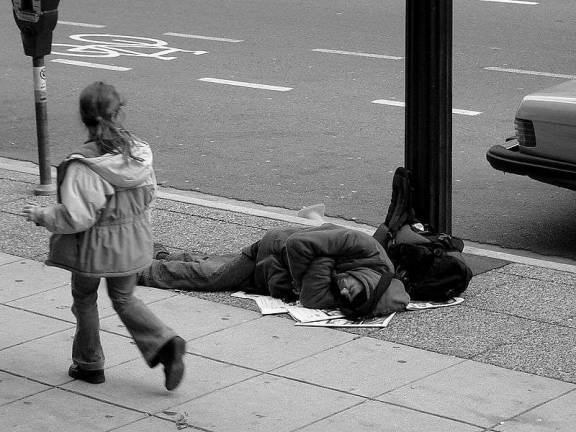How to Turn Bystander Apathy into Action

By Kristine Keller
Just last week I was strolling down the F train platform, iPod earphones tucked firmly in my ears, grooving to the latest Miguel jam, when I heard a scream. I looked across the platform and saw a pepper-haired woman who had clearly tripped, clutching her knee in pain. After a few moments a couple in their early 20s sat beside the woman, consoling her, and ensuring her safety.
What's interesting about this scenario is the pair were not the first to notice the injured woman, yet they were the only ones to lend a hand. It's not necessarily that the first handful of people were malevolent, they were merely exhibiting one of the most common psychological processes to date: bystander apathy.
This phenomenon occurs in times of emergency when people in groups fail to intervene, instead thinking that someone else will react to the situation. This process is compounded by the more people there are present. When you alone witness a problem, you feel the weight of responsibility on your shoulders, but as the number of people in a group increases, that feeling of sole responsibility is lessened. If everyone in a group assumes the person to their right is calling an ambulance or searching for help, it inevitably means no one reacts or provides help.
Another contributing factor to the bystander effect is pluralistic ignorance-when people look to another's cues to inform their own behavior. Surely it's easy to continue to your train if no one else appears to be concerned about the injured woman.
The most famous example of this phenomenon is the case of Kitty Genovese, a New York City inhabitant who was repeatedly stabbed outside of her apartment in 1964, while a surfeit of neighbors watched from their homes. It is said that each neighbor assumed another watcher had already intervened. The neighbors' lack of action contributed to Genovese's death. This phenomenon has been studied most frequently in similar emergency situations.
It's fair to say that this inactive behavior is New York City's reputation from Genovese's days to the present. Take a walk down Broadway on any given day and this is easily justifiable. But if my years here have taught me anything, it is that New Yorkers can be kind, good, and perhaps most notably, present. Yes, for every altruistic couple there may be tens of ignorant passersby, but the good news is that this problem can be solved just by knowing it exists.
Social psychologists over the years have worked to demonstrate how bystander apathy can become bystander action just by making people aware of the phenomenon in the first place. Psychologists also recommend signaling one individual and asking that person to call for help, rather than allowing people to let responsibility diffuse from one to another.
I believe New Yorkers will answer a call to action; they just need to be able to hear it, or in some cases, see it. If someone is screaming after a hooded runner, or clutching an ankle, or passed out on the sidewalk, we're programmed to overlook this, assuming someone closer to the problem or closer to the person will aid in their recovery. Instead, let's see this as a personal call, a direct line to you as the witness. Offer a phone, a band aid, a dollar or at the very least an "are you okay?" Don't wait for that other guy, be the other guy. Because if Ryan Gosling isn't around, you've got to become your own hero.
Kristine Keller received her Master's degree in psychology from New York University. E-mail her at StreetshrinkNYC@gmail.com for questions.